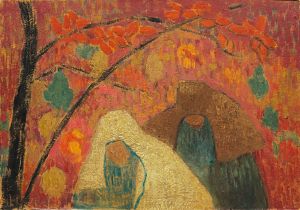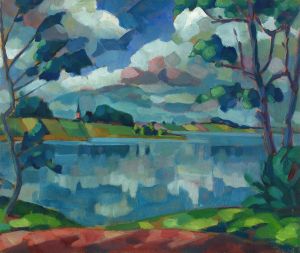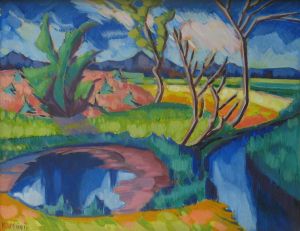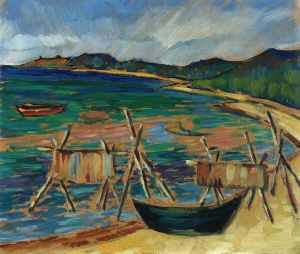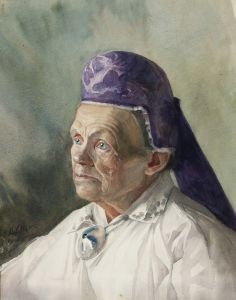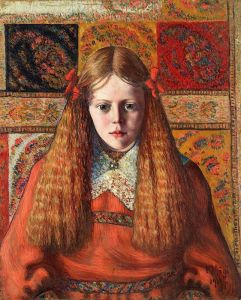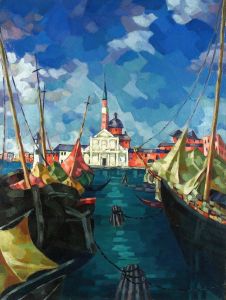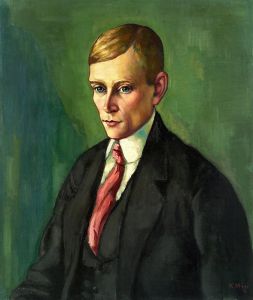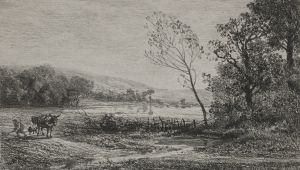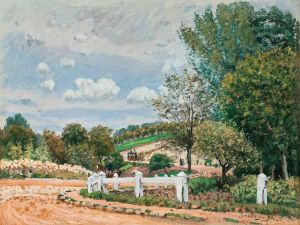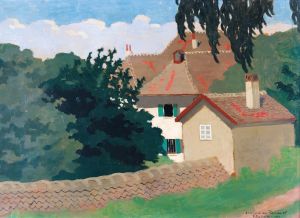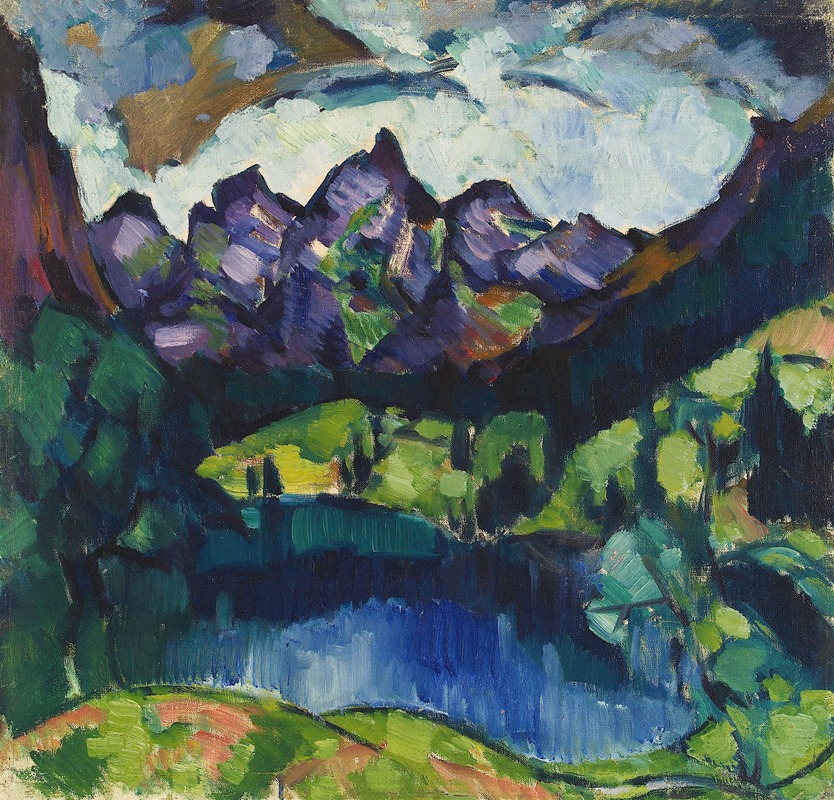
Obersdorfi maastik
A hand-painted replica of Konrad Mägi’s masterpiece Obersdorfi maastik, meticulously crafted by professional artists to capture the true essence of the original. Each piece is created with museum-quality canvas and rare mineral pigments, carefully painted by experienced artists with delicate brushstrokes and rich, layered colors to perfectly recreate the texture of the original artwork. Unlike machine-printed reproductions, this hand-painted version brings the painting to life, infused with the artist’s emotions and skill in every stroke. Whether for personal collection or home decoration, it instantly elevates the artistic atmosphere of any space.
Konrad Mägi was an Estonian painter known for his vibrant landscapes and distinctive use of color. Born in 1878 in the town of Rõngu, Mägi became one of the most prominent figures in early 20th-century Estonian art. His work is characterized by its bold color schemes and expressive brushwork, which were influenced by various European art movements, including Impressionism and Fauvism.
"Obersdorfi maastik" is one of Mägi's notable works, although specific details about the painting, such as its creation date and current location, are not extensively documented in public records. Mägi's landscapes often depict the natural beauty of Estonia and other regions he visited, capturing the essence of the scenery with emotional intensity and a unique color palette.
Mägi's artistic journey began in Tartu, where he initially studied at the Pallas Art School. His education continued in various European cities, including Paris, where he was exposed to the avant-garde movements of the time. This exposure significantly influenced his style, leading him to adopt a more modern approach to landscape painting. Mägi's work is often noted for its synthesis of natural observation and emotional expression, a hallmark of his artistic philosophy.
Throughout his career, Mägi traveled extensively, and his journeys played a crucial role in shaping his artistic vision. He visited places like Norway, Italy, and the Åland Islands, each of which left a distinct imprint on his work. The landscapes he encountered during these travels provided him with a rich source of inspiration, allowing him to experiment with different techniques and color combinations.
Mägi's contribution to Estonian art is significant, as he helped to establish a national identity in painting during a time of cultural awakening. His works are celebrated for their ability to convey the spirit of the landscapes he depicted, often imbuing them with a sense of mysticism and emotional depth. Mägi's paintings are housed in various collections, including the Art Museum of Estonia, where they continue to be studied and admired for their artistic and historical value.
Despite his relatively short life—Mägi passed away in 1925 at the age of 46—his legacy endures through his vibrant and evocative landscapes. His ability to capture the interplay of light and color in nature has earned him a lasting place in the canon of Estonian art. While specific information about "Obersdorfi maastik" is limited, it can be appreciated within the broader context of Mägi's oeuvre, which remains a testament to his skill and vision as a pioneering landscape painter.





